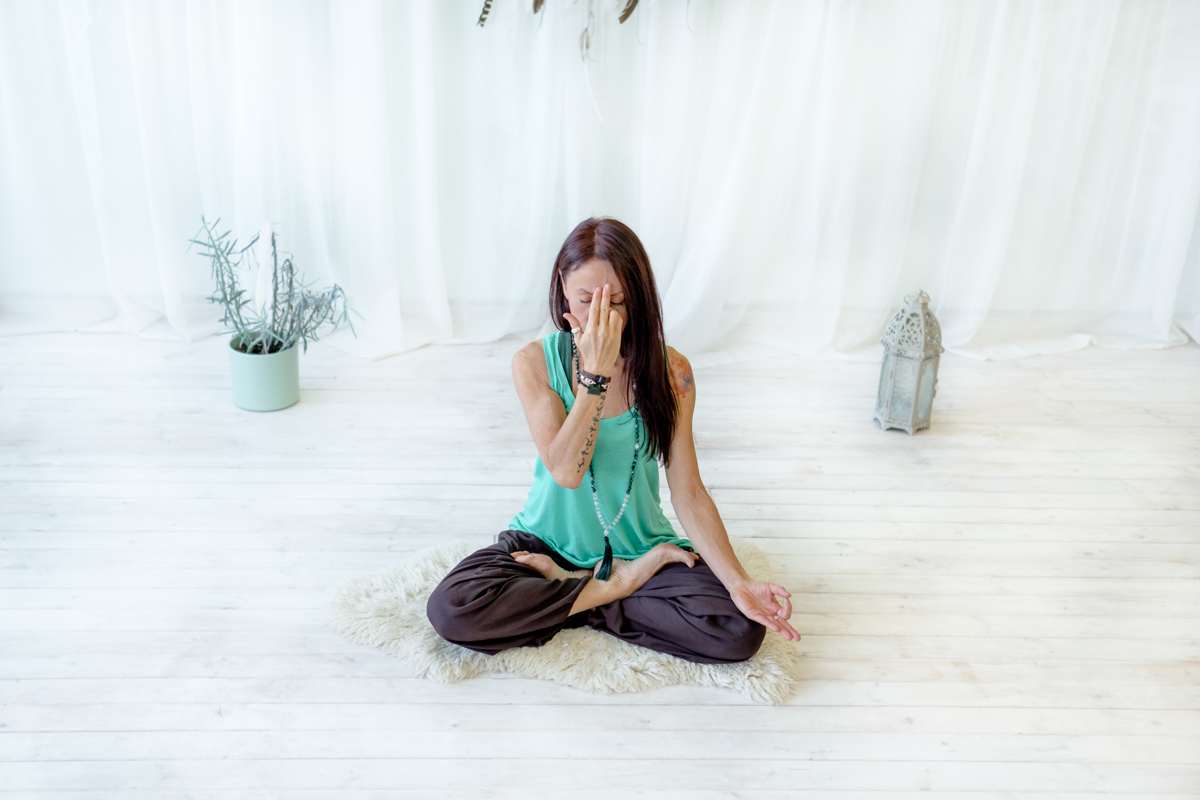
Pranayama - powerful yogic breathing
In Pranayama, breathing is elevated to a controlled, extended process of exhalation and inhalation. This generates the cosmic energy of prana, the life force that provides the strength, power, and vitality required for any activity - B.K.S. Iyengar
Pranayama is generally defined as breath control. Although this interpretation may seem correct because of the practices involved, it does not convey the full meaning of the term. The word pranayama is comprised of two roots: 'prana' plus 'ayama'. Prana means vital energy or life force. It is the force that exists in all things, whether animate or inanimate. Although closely related to the air we breathe, it is more subtle than air or oxygen. Therefore, pranayama should not be considered as mere breathing exercises aimed at introducing extra oxygen into the lungs. Pranayama utilizes breathing to influence the flow of prana in the nadis or energy channels of the pranamaya kosha or energy body.
The word Yama means to control and is used to denote various rules and codes of conduct. However, this is not the word that is joined to prana to form pranayama; the correct word is Ayama which has far more implications. Ayama is defined as an extension or expansion. Thus, the word pranayama means extension or expansion of the dimension of prana. The techniques of pranayama provide the method whereby the life force can be activated and regulated to go beyond one's normal boundaries or limitations and attain a higher state of vibratory energy and awareness.
Four aspects pf pranayama:
- Inhalation or pooraka
- Exhalation or rechaka
- Internal breath retention or antar kumbhaka
- External breath retention or bahir kumbhaka
The different practices of pranayama involve various techniques that utilize these four aspects of breathing.
The mind and breath
It is said that the mind and the breath are one's constant companions. Where there is a breath, there the mind is focused, and where there is an active mind, so is the breath focused. Pranayama seeks to quiet the mind, controlling it through the deep and rhythmic flow of inhalations and exhalations.
The sound of the breath
The pranayamic breath has a sound of its own: Soham. The sound of the inhalation is "as" and that of the exhalation is "ham". "Soham" has been interpreted as "He, I am and I am He". During pranayama, concentration is drowned solely in the action of the breath, and it is this attentive awareness of the breath that leads to the art of dhyana, or meditation.
The art of inhaling not only focuses the mind on the breath, but also brings one into contact with their essence, or soul. With the retention of the breath during the inhalation, the soul becomes wedded to the body. This is the divine union of the soul with our nature or body. During the process of exhalation, the soul re-enters into an unfathomable space. The mind dissolves and the divine marriage of Prakriti, the body, and Purusha, the soul, occurs.
Just as the practice of asanas, or poses, is seen as yoga in action, developing the individual's knowledge of the body, mind, and consciousness, the practice of pranayama is said to lead on toward the path of love minus lust, which is known as Bhakti Marga. Among the eight limbs of yoga, pranayama is therefore seen as the heart of the practice.
Contra-indications:
- Pranayama should not be practiced during illness
- Some pranayamas are not recommended for beginners
Time and place of the practice
The best time to practice pranayama is down when the body is fresh and the mind is very few impressions. If this is not possible, another good time is just after sunset. Try to practice regularly at the same time and place each day. Do not be in a hurry. Practice before eating in the morning or wait for at least three to four hours after meals before starting pranayama. Practice in a quiet, clean, and pleasant room, which is well-ventilated but not draughty. Pranayama should be performed after shatkarmas and asanas, and before meditation practice.
There are many different pranayamas:
- Nadi Shodana Pranayama. The word Nadi means channel or flow of energy and Shodana means purification. Nadi Shodana, therefore, means that practice that purifies the Nadis.
- Ujjayi Pranayama. The word ujjjayi means victorious, it is also known as psychic breath.
- Sheetali Pranayama which means cooling breath.
- Sheetkari Pranayama which means hissing breath.
- Brahmari Pranayama which means humming bee breath.
- Bhastrika Pranayama which means bellows breath.
- Kapalbhati Pranayama which means frontal brain cleansing breath. Kapalbhati is the practice that brings a state of light or clarity to the frontal region of the brain.
- Moorchha Pranayama which means swooning or fainting breath.
- Surya Bheda Pranayama which means vitality-stimulating breath.
Benefits of pranayama:
- Decreases stress
- Improves sleep quality
- Increases mindfulness
- Helps lower blood pressure
- Improves lung function
- Improves immune system
The blog post about powerful yogic breathing for beginners is here.
Nadi Shodana pranayama for beginners 12-minute YouTube video is here.
Nadi Shodana Pranayama with antar kumbakha 17 minutes youtube video is here.
You can start your yogic journey here.
